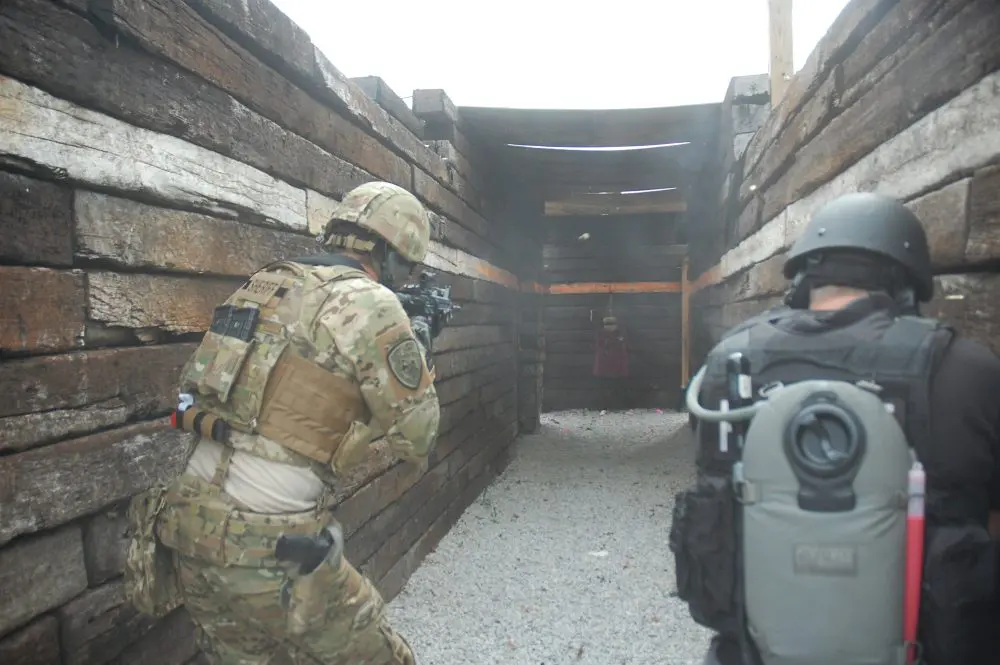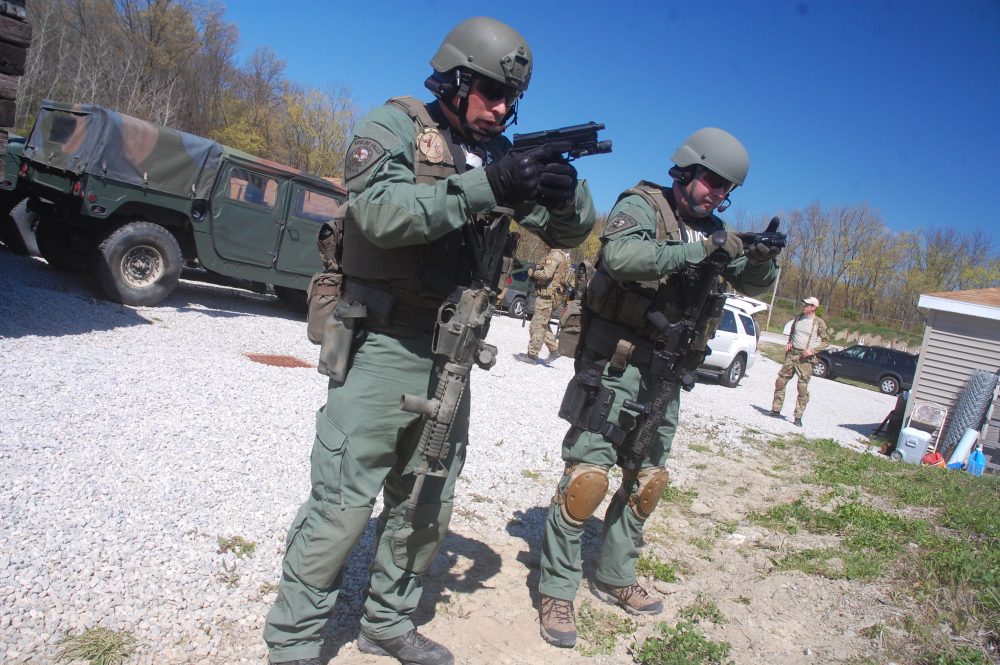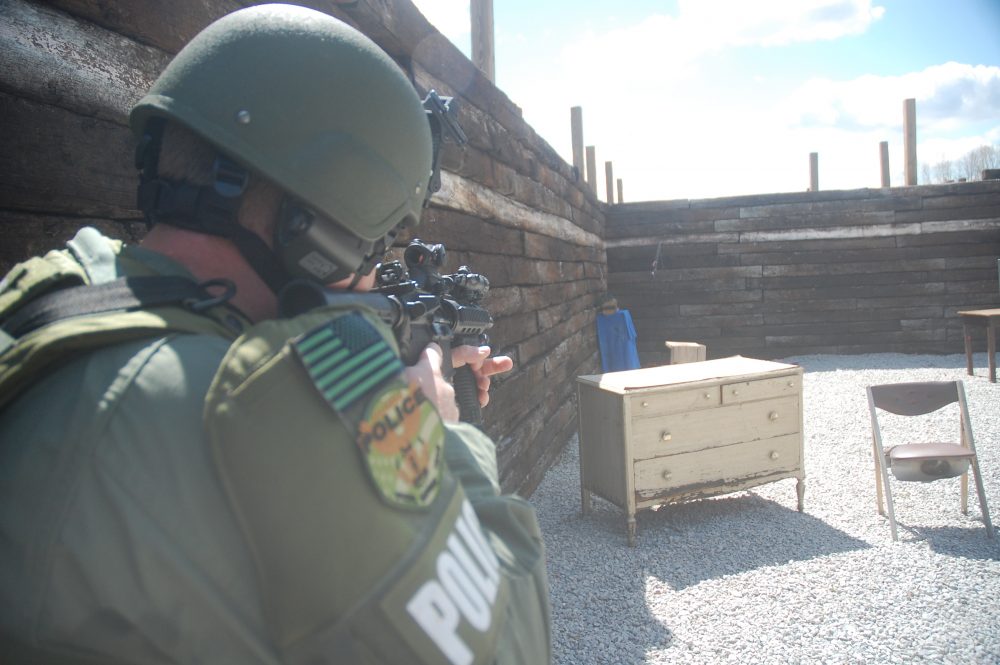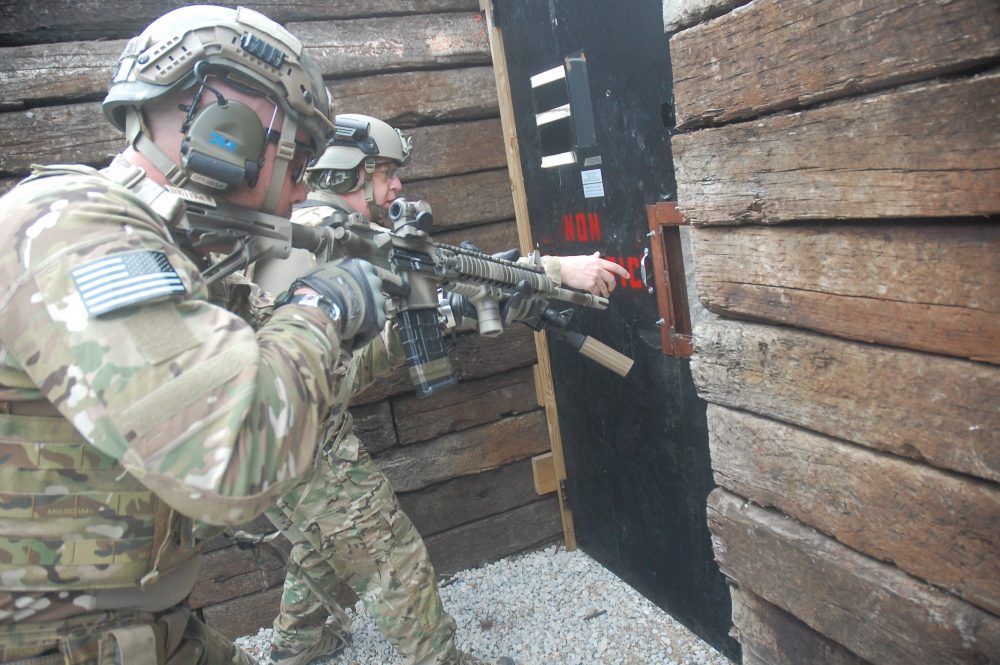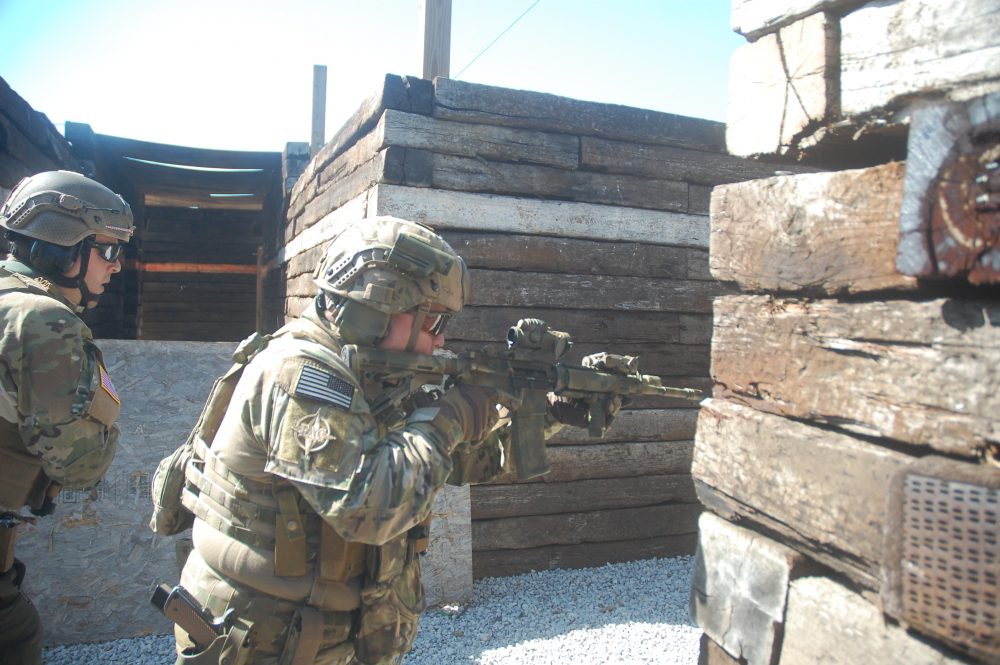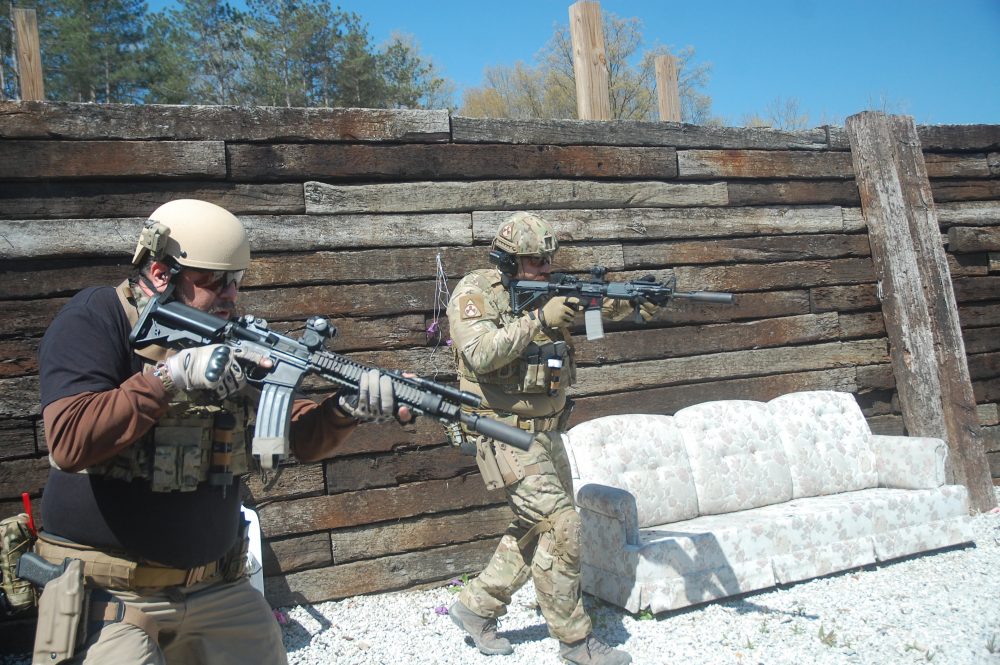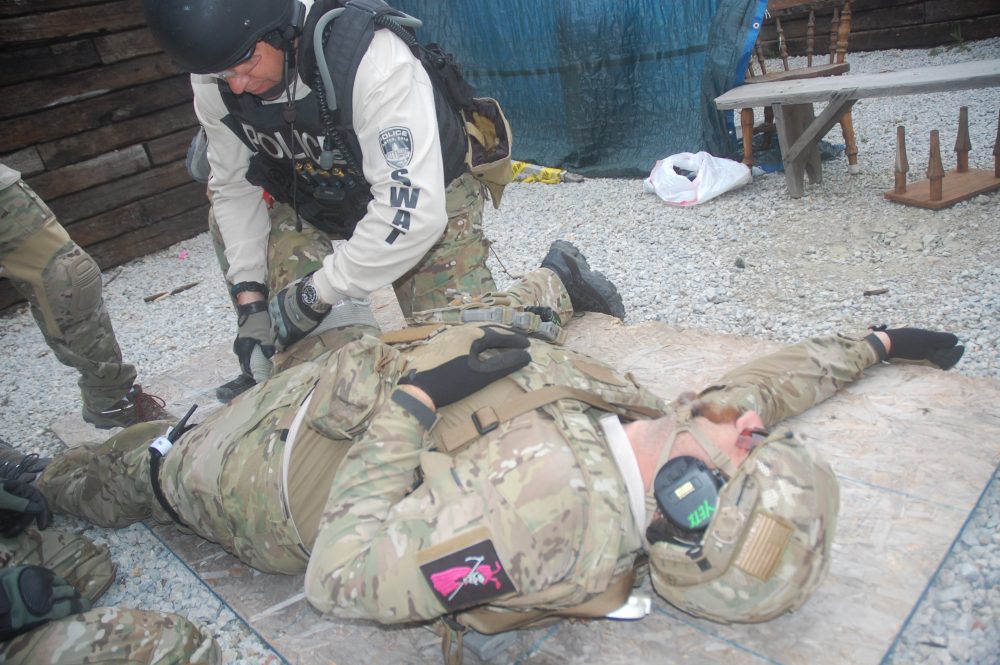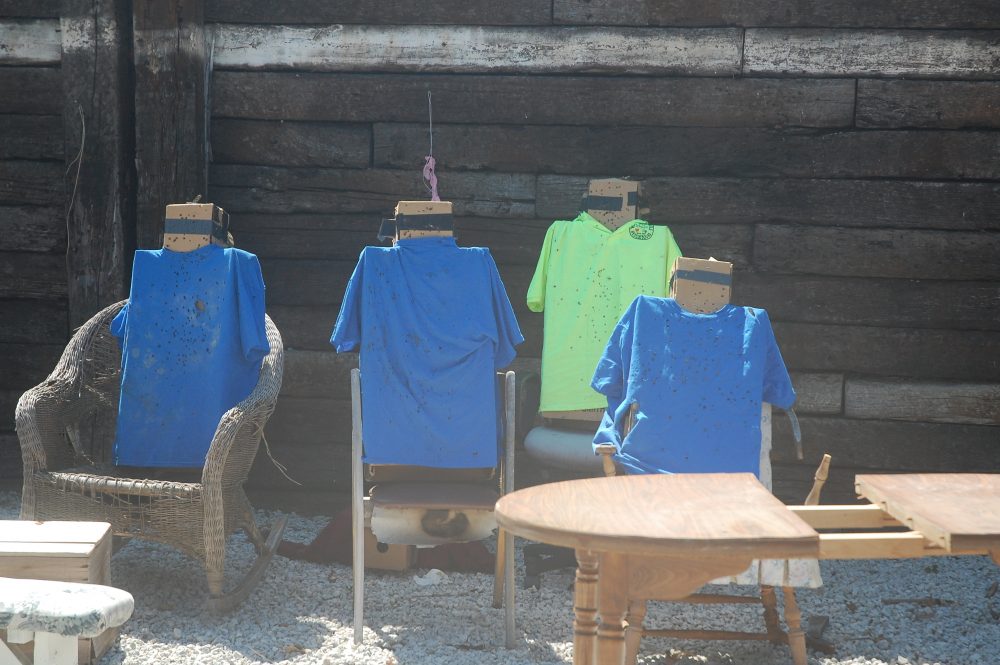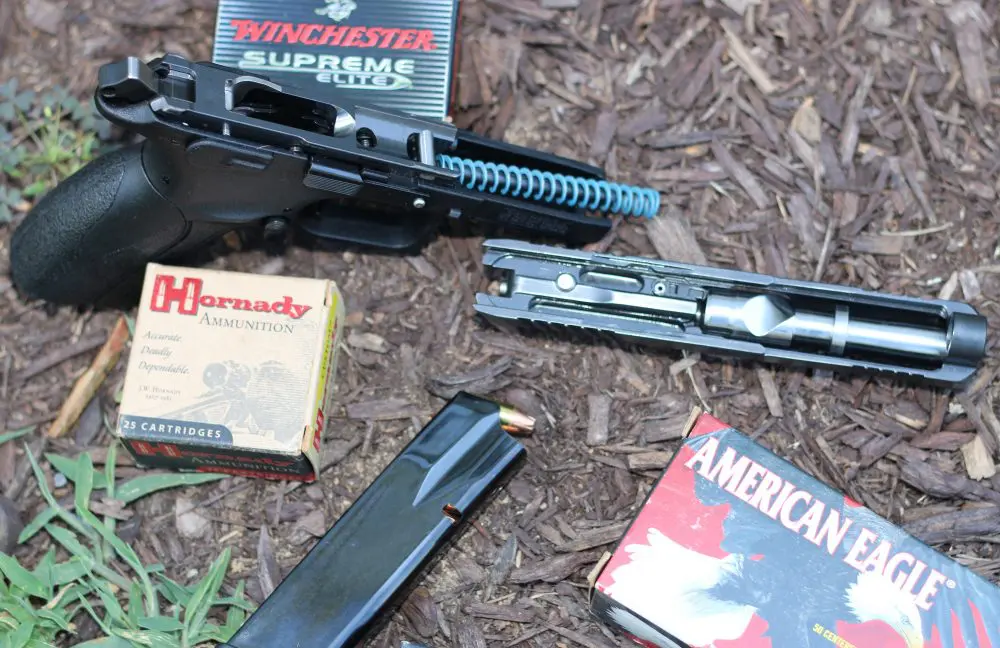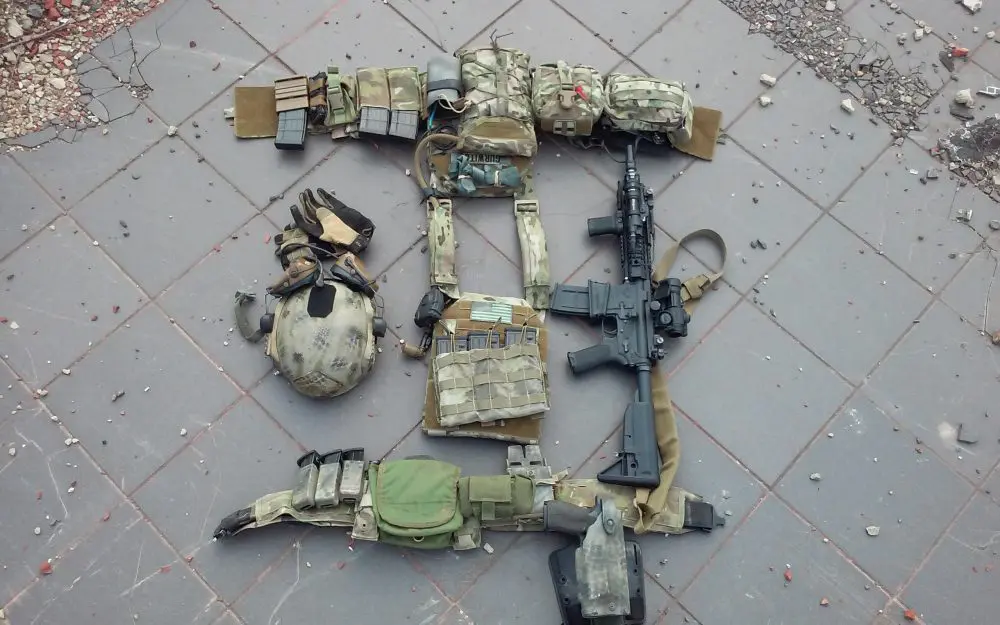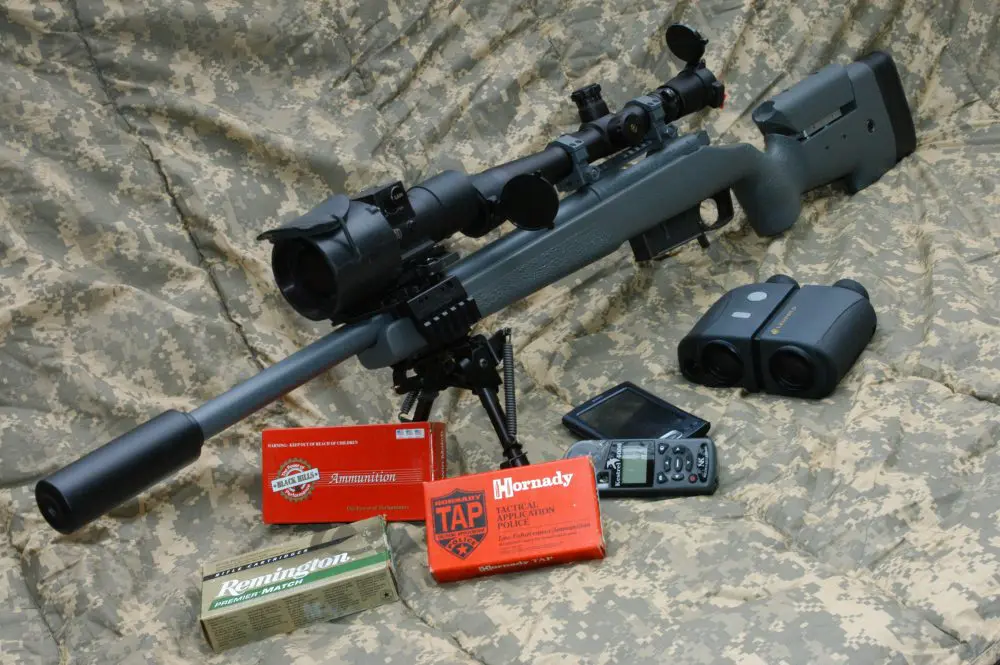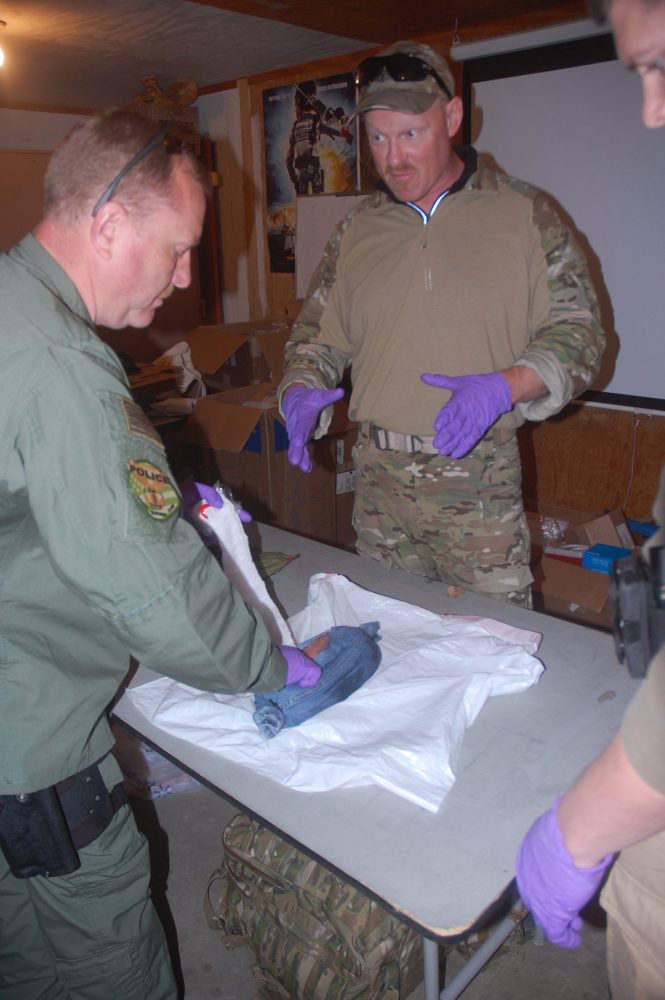
In this day and age, those in the roles of sheepdogs and/or gunfighters are expected to do more with less. Peace officers are expected to make entry to dangerous active-shooter situations with what resources they have. Our soldiers can get into gunfights while clearing structures in faraway lands looking for bad guys. Many lessons have been learned over the past several years from military and law enforcement experiences. Those lessons have taken some methods we had used for many years and refined them to ones more in tune with modern mindsets and needs. One such course that takes those lessons learned and brings them to others who go in harm’s way is the EAG Tactical Shoot House/Combat Lifesaver (CLS) course. I atttended this course in Alliance, Ohio.
We’ve all trained on a firing line shooting at paper targets downrange. This square-range training is what the majority of shooters are used to. Classes are run with everyone on a line shooting in the same direction according to a prescribed course of fire as dictated by the instructor or range officer in control.
This is a necessary way to run these types of courses safely, but they do have their shortcomings. One shortcoming is the ability to safely have targets to the rear and sides, which can make scenarios for problem solving more limited.
Table of Contents
BEYOND THE SQUARE RANGE
Running scenarios and role playing are popular and effective methods of training outside the square-range mindset. Stepping into a 360-degree environment aids in maintaining situational awareness and building problem- solving skills. Force-on-force drills are one method of training those skills, but require special protective gear and either Airsoft or weapons that can fire Simunition rounds.
There’s a lot to be said for training in your own gear with your own weapon. To do this, you need access to a shoot house. The Alliance Police Department in northwest Ohio has found a way to develop that resource. Through the support of their police chief and dedicated law enforcement professionals, the members of Alliance Police have built a roughly 8,000-square-foot railroad-tie shoot house that they use to conduct training that is the envy of many. Alliance PD’s facility is a perfect match for EAG’s Shoot House course.
Two Montana SWAT officers follow procedure called Make Ready. By making a personal checklist for your eyes and ears, checking your sidearm and then carbine, red dot sights and lights, you lessen the chances of forgetting any of them. Not following this may lead to disastrous consequences, especially if you need the pistol or your weaponlight and forgot to check that they were ready to go.
I started my law enforcement career in 1994 and received local training in a number of topics including Basic SWAT and Patrol Carbine. I recognized back then that those particular courses were only a starting point to learning, as Tactics, Techniques, and Procedures (TTPs) evolve over time. The training I received was the same old information that was just being repeated, and left many new questions unanswered. I also recognized that the reason we got the local training was that it was much cheaper.
Many agencies don’t realize the benefits good quality training provides, and so send their officers to budget courses. Others have only so many dollars in their allotted training budget. Higher-cost courses deplete that and perhaps another officer will not get the training s/he needs that year. I saved up and paid for several training courses myself. Over time, these courses have gotten me to where I need to be. I began in 2006 with the EAG Carbine Operator Course, which started to develop my weapons handling and mindset to a point where I felt I was ready for an additional challenge.
Many get absorbed into the first threat they see in front of them, missing threats in the corners. With a two-man entry, it can have a fatal outcome if you do not dominate your corner first. This Alliance PD lieutenant does just that, having engaged a threat and now covering an unknown threat.
SHOOT HOUSE/CLS COURSE
I found my challenge in the EAG Shoot House/Combat Livesaver course at the Alliance PD shoot house.
One of the things I wanted to receive additional training on from an outside source was two-man tactics. I started my career learning to enter a room via a Buttonhook or Criss-Cross, but was never really taught what to do in the room and why. In later years, we entered rooms with many officers in a stack, giving me additional protection through numbers from the errors I was making.
The active shooter training I received was based on at least four officers in a diamond formation, even when not feasible. It took time in law enforcement and military circles to recognize that tactics needed to become more realistic. Many officers can relate to the fact that it will be a long time coming for them to get four officers on scene to an in-progress violent event. They probably can get two, though.
Team engages threat target at deceptively far distance. Many feel they need only a handgun in a structure, but this target would not be an easy shot with a pistol under stress. How many locations do we go into with aisles or long hallways that could be similar to this one or even longer? Bring enough gun.
The class was made up of patrol officers, federal LE, SWAT, and supervisory roles, military service members, and private citizens. Steve Fisher from Magpul Dynamics attended, along with SureFire LE Division representative Scott Wilson. Students drove in from all over the country, including Oklahoma, Wisconsin, Pennsylvania, Alabama, and Ohio. Four students made a marathon 36-hour trip from central Montana. One thing students had in common was that they needed the training. No one was there to pad a list of training or entertain fantasies.
The course started with a casual Carbine Tune-Up put on by Alliance PD. This was separate from the shoot house and was square range work and drills. Realities of life and duty are that we sometimes can’t practice as much as we need to. The Tune-Up shook off any cobwebs and focused on drills specifically beneficial to the Shoot House course, such as Box Drills, TacLoads, and shooting/movement drills designed to simulate room entry. The added benefit of this was that the time in the shoot house portion of the class could be spent doing additional runs in the house—the very thing we were there for.
Two U.S. Army shooters show how to properly approach a door. One shooter prepares to open the door while his partner stands ready, covering him and able to engage any threats or move where he needs to. Communication needs to be kept simple, and avoid stating the obvious while under stress.
PROBLEM SOLVING
Just because this was a shoot house class does not mean it was a shooting class with targets to shoot at. It was a problem-solving class that involved shooting as some of the solutions. It was also not a SWAT methods class, although the techniques and concepts learned will aid in SWAT training and methods.
I wished I’d had this training back when I started my career. It simplified tactics and taught me to approach certain things differently, like how I enter a room and how not to get sucked into a fight with the first target I see in a room. You only have one partner with you, and you need to think using room geometry and corner domination. Some of the different SWAT entry methods I have used over the years don’t work with only two people—as I later found out in the scenario runs.
Various fundamentals were presented and organized for us. Phrases like dominating/driving your corners, L and T intersections, and not getting sucked into the fight were driven home, even to those who had done this for real.
I was point on the entry team at a prior agency, and still get put in point roles with various duties at my current agency. I always knew that the point/#1 guy was never wrong, and I always made an entry and went where I had a danger area or saw a threat. I always did this because I believed it was my job to make sure the rest of the team could get in safely. That mindset works in an entry stack with a lot of help flowing in after you to cover the areas you can’t. I learned the hard way that it doesn’t work the same way with a two-man element.
This team demonstrates an L Intersection. Inside shooter starts first, getting his gun up toward any threats covering his partner. Outside shooter moves after inside shooter does, into the hallway and some feet away from the inside shooter. His gun comes up a fraction of a second later. When done correctly, two guns are on a threat at different angles.
RUNS ‘N’ REST
While engaging threats immediately through the door, I got sucked into that fight and neglected the corner targets that were ultimately more important. EAG Assistant Instructor Mike Hueser has a way of putting things into perspective to help aid students in understanding the priorities of the targets inside a room. While working a structure this way is not easy, it is reality for many, and students learned more of why the tactics need to be done like this instead of merely having concepts recited to us—as many of us have had in other training over our careers.
With the movements taught negotiating rooms and hallways, I fully feel confident in being able to clear structures more safely and efficiently. As we discussed in class using the concepts we’d learned, with a team of three there is very little we cannot negotiate through and solve tactically.
This course was different than previous shoot house courses. A shoot house course naturally will have downtime. Targets need to be reset and it takes time to cycle teams through the scenarios. This downtime is both a necessary evil and a benefit. The downtime was spent decompressing. Many debriefed amongst each other, some practiced dry runs off across the parking lot, some fine-tuned their gear, and everyone shared knowledge of their experiences. Many learned as much outside the house as in.
SureFire LE Division rep Scott Wilson and Magpul Dynamics Instructor Steve Fisher work the room’s geometry. Scott holds his corner while Steve drives farther into the room toward his. It was a great benefit to have industry partners present.
Overall we did 16 different runs in the house, each with a longer scenario with additional skills required for practice and increasingly complex tactical problems to solve.
Most of us were paired with someone we’d never met. This naturally created some difficulties in how we flowed through the rooms and communicated. Realistically, it’s pretty similar to how many officers have to operate with unknown backup from other jurisdictions.
Students who were partnered up with someone they already knew and had worked with before had a big advantage over the rest of us. Those teams already had basic communications and movement together down. They knew how their partner was going to move and what they needed, or just as importantly didn’t need, to say. The rest of us took a couple days to get to that point.
Steve Fisher simulates casualty as team has to control two types of bleeding before extracting him. CLS module was an important part of this class—everyone has to consider the possibility of a gunfight occurring near them.
NIGHT WORK
One-third of the shoot house runs were made at night. Faint solar lighting provided only enough illumination to set the mood. Some of us found out the hard way that our weapon lights were about as useful.
The topic of lights and their employment can fill many articles and courses, so I’ll only touch on some common points everyone experienced. There has been increasing interest in any quality instruction that deals with low-light issues. What many of us find during training is that the lights we’ve chosen aren’t sufficient for the task of a possible gunfight. In many cases the lights aren’t strong enough, or are too tightly focused and cause us to miss threats, or we have placement issues or problems with how we activate them.
We all remember being taught techniques such as blipping the light or turning the light off and moving after shooting. These came from ideas that in theory made sense. Using a light in the dark makes you a target. However, the reality is that techniques such as those have far greater disadvantages to them. One shooter completely missed a threat target in the shoot house when he shut his light off as he cleared a room. It was a learning point, and we were taught to paint the rooms using the light as a brush.
We also trained to use a “clickie” switch to leave the light on. There are times when the light needs to be off, such as not backlighting our partner, but we were taught to leave the lights on more than off, and the night practice helped us know when to use the switches.
Other myths were grounded in reality, and people left with a more practical knowledge base for using their weaponlights. We also learned that even a 200-lumen light is not enough to properly identify a target at distance, and many who got to see different light models in action are leaning toward 500-lumen lights to do the job properly.
3D targets by Action Target enhanced the scenarios. Shirts aided in target discrimination skills, and all had balloons holding them up. Whether we needed to shoot the target in the head or chest was dictated by where the balloons were fastened. While some consider them pricey, these targets last awhile and provide training in failure drills that is much more realistic than flat paper targets.
COMBAT LIFESAVER
This course had another means to deal with the down time, and for many it was the final reason to commit to taking the course. EAG’s Pat Rogers added a Combat Livesaver module taught by Dr. John Spears.
Doc Spears is a former 18D with 7th Group SF, and is currently an Orthopedic Surgeon. Doc Spears provided a hugely unique insight to the Combat Livesaver module as well as the runs that he supervised and critiqued in the shoot house.
I carry various individual first aid kits (IFAK), trauma kits, and tourniquets on my gear and my person while working. I’ve had basic exposure to them, but like many have only a vague understanding of how to use some of the equipment inside them.
I’m sure most of us know how to apply a combat dressing as pressure on a wound to stop bleeding. But I’d bet that most folks attending courses like this or reading this don’t understand how to recognize and treat trauma conditions such as exsanguination from an extremity wound, tension pneumothorax, or an airway occlusion. From my notes, 15% of those who survive the initial injury event die from those conditions, and they are all potentially survivable!
Doc Spears took something that many of us have had recited to us and, through the use of props and a commanding and enthusiastic teaching presence, made us understand them. Demos included packing a wound in a bullet channel made through meat packed tightly in an old trouser leg, and using a large rack of ribs to identify the correct location to insert a needle to relieve tension pneumothorax.
As a peace officer, I can see myself having to use some of these techniques on either an ambushed partner or myself. An ambulance is likely aways out for me, and the scene may not be safe enough for EMS personnel to enter. I now feel fully confident that I can use all the items in an IFAK and use the extraction methods taught to us to remove the wounded once fire superiority is obtained.
The module helped me improve my gear with inexpensive strapping to aid in extractions, and taught me which IFAK items I need and which are fluff.
This was one of the most, if not the most, beneficial courses I have taken during my career. Much of the information I can pass on to the small groups of LEOs I work with. I made contacts and bonds that will hopefully last a lifetime, and I gained further knowledge of how to shorten the life spans of those who endanger us, and prolong the life spans of those who are important to us.
SOURCES:
EAG Tactical
(928) 636-6686 (fax)
www.eagtactical.com
Action Target
(801) 377-8033
www.actiontarget.com
Alliance Police LE Training
(330) 821-9140
www.alliancepolice.com
Magpul Dynamics
(877) 4MAGPUL
www.magpuldynamics.com
SureFire, LLC
(800) 828-8809
www.surefire.com
